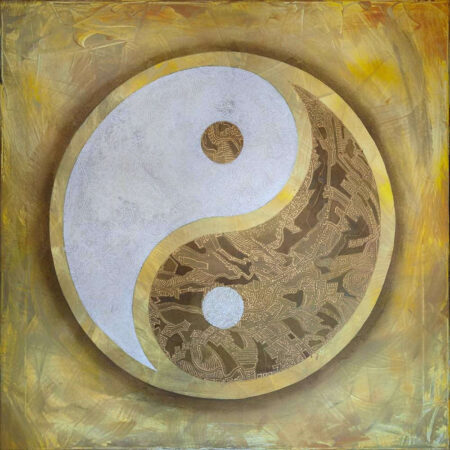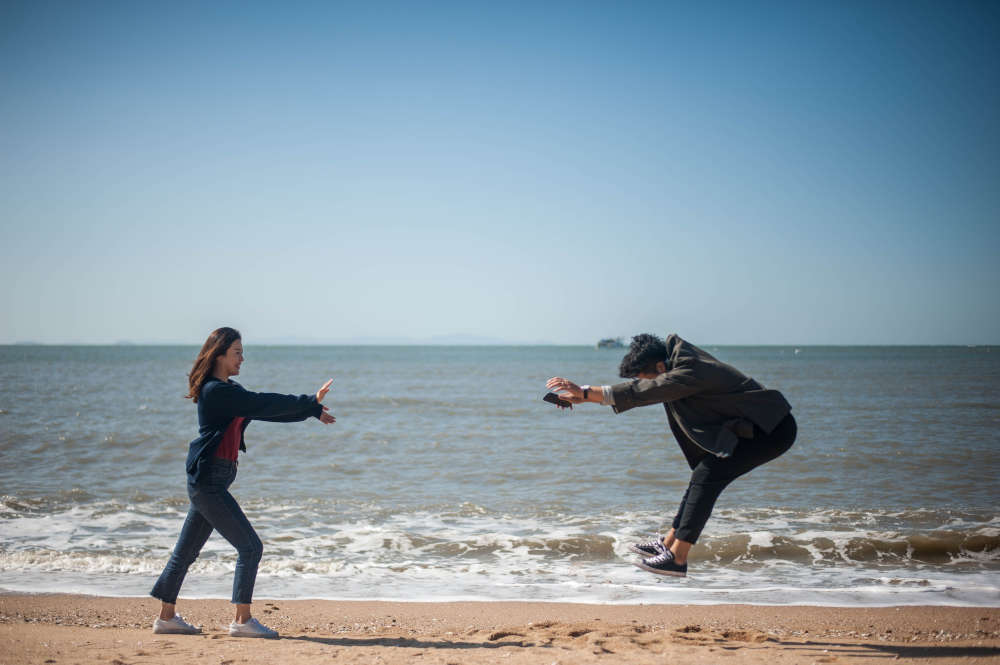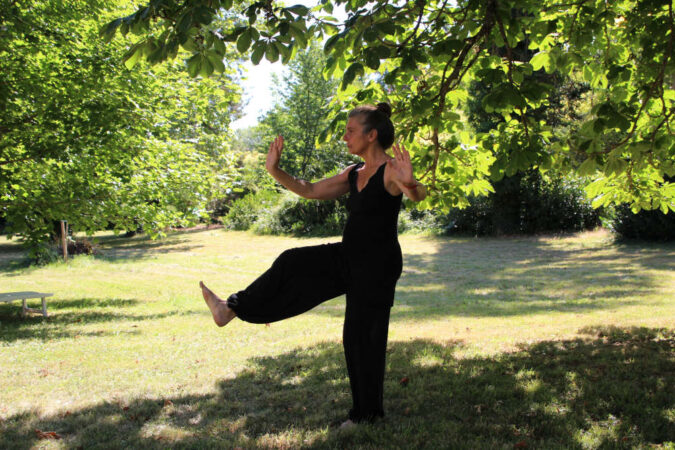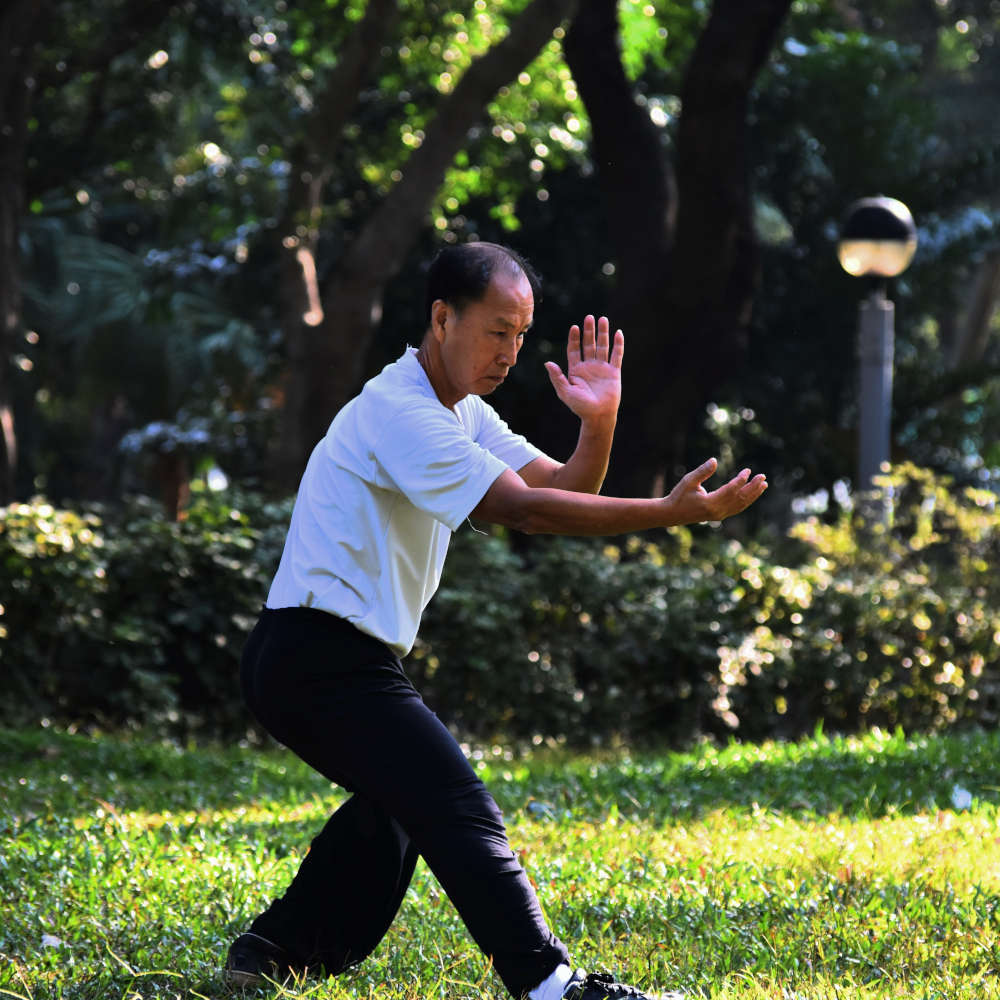What Exactly Is Tai Chi?
Tai Chi, also known as Tai Chi Chuan, is a Chinese martial art. It is also known as “shadow boxing.” Slow-motion strengthening and stabilizing exercises are performed.
Tai Chi combines movement and meditation, making it ideal for relaxing and improving concentration.
Tai Chi is short for Tai Chi Chuan, or Taijiquan. This is a thousand-year-old Chinese martial art. In Europe, it is referred to as “shadow boxing.”
The movements are similar to a fight against an invisible foe.
The unique aspect of Tai Chi is that, unlike other martial arts, the exercise sequences from self-defense elements are performed very slowly and fluidly—almost in slow motion. It’s no surprise that Tai Chi Chuan is regarded as a form of moving meditation.
Tai Chi is a popular sport in China. Hundreds of people can be seen performing the elegant, soft, dance-like movements early in the morning in city parks and public gardens.
Where Did Tai Chi Originate?
“Taiji-quan” is based on Taoist philosophy, which was founded by the Chinese scholar and philosopher Lao-tzu. The term “Taiji” refers to life’s highest active principle, the harmonious interplay of the opposing elements Yin and Yang.
“Quan” literally means “fist,” and it represents an empty hand fighting without weapons. In the past, it meant a fighter who used only his bare hands to fight for the highest ideals.

The Snake Triumphs over the Crane
Legend has it that the martial art started when the Taoist monk Zhang Sangfen saw a snake and a crane fighting in the Wudang Mountains.
The snake expertly dodged again and again until the much stronger crane was exhausted. These qualities of softness, pliability, and yielding can be found throughout Tai Chi.
As a result, the emphasis is not on strength or speed exercises, but on performing movements as light-footedly and with as little effort as possible.
Because there is no uniform transcription of Chinese characters into Western script, the various spellings—Taijiquan, Tai Chi Chuan, and others have arisen.
What Is the Mechanism of Tai Chi?
ai Chi is a form of martial art. Attack and defense movements are executed slowly and fluidly. The goal is to defeat the opponent with ease and precision.
However, unlike boxing, judo, and tae kwon do, it is not fought against a live opponent. Instead, the conflict is mimicked. Tai Chi is also called an inner martial art or shadow boxing because of this.
There are several fixed exercise sequences known as “forms.” These are choreographies that can last up to an hour and a half.
Short forms of 15 to 20 minutes have become common in the Western world. In Tai Chi, you don’t just punch or kick on the spot like you do in classical martial arts. Instead, you follow a strict sequence of moves.
The emphasis in Tai Chi is on body tension, deep, slow abdominal breathing, and the mindfulness principle. This means that the person doing the tai chi moves with awareness of his body and his surroundings.
Qi, or Life Energy (Chi)
Everything revolves around Qi, or life energy (Chi). It should be able to flow as freely as possible in the body, strengthening and healing the person. The practitioner should gradually learn to perceive and control the Qi.
Tai Chi is good for concentration due to its relaxing and balancing movements and the level of attention required to practice it. Both together cause a high level of mindfulness and train the ability to concentrate.

What’s the Distinction between Tai Chi and Qi Gong?
Tai Chi and Qi Gong are two Chinese practices that are frequently confused with one another. It’s no surprise that the movements are so similar. Furthermore, both disciplines seek to strengthen the vital energy—chi or qi. However, there are a few distinctions:
While Tai Chi was originally developed as a martial art, Qi Gong began as a health system. Qi Gong is a type of Traditional Chinese Medicine (TCM) that uses breathing and meditation techniques to maintain health and prolong life.
Tai Chi, on the other hand, is designed to teach attack and defense skills. Another distinction is that Qi Gong is primarily practiced in an upright standing position. Tai Chi has more exercises and a wider range of motion than other styles.
In the Western world, both Tai Chi and Qi Gong are known as health-oriented martial arts. As a result, the original distinction is less relevant to us today.
How Does Tai Chi Improve Concentration in What Ways?
Tai Chi is said to be good for both the body and the mind, even in old age.
The slow, smooth movements are especially gentle on bones, joints, and ligaments. They can increase flexibility while also strengthening the body.
The forms, which are mostly done standing, target the torso muscles in particular. Tai Chi can be used to activate deep-seated muscles, which can help to prevent or alleviate back pain. As a result, Tai Chi is an excellent balancing, rehabilitation, and prevention sport.
Practicing the postures necessitates a high level of concentration. You must be able to maintain focus while coordinating your upper and lower body. Tai Chi is an excellent form of concentration training in this regard.
Many people who suffer from a lack of concentration or concentration disorders begin learning the meditation form Tai Chi and notice a significant improvement in their concentration levels!
Tai Chi practice is similar to mental purification: you think about what you’re doing and do what you’re thinking.
This produces a pleasant collection as well as a reference to one’s own body; self-awareness (proprioception) is increased. Attention and inner peace help people deal with everyday stress in a more balanced way and with more strength.
Finally, Tai Chi is founded on the principle that strength lies in tranquillity. The exercise sequences are almost meditative, which can be beneficial to health.
Martial arts are said to reduce blood pressure and calm the mind. Good discipline, then, to combat stress. Even a unit of Tai Chi in the evening could help you sleep better.
Who Should Practice Tai Chi and Who Should Not?
Tai Chi is appropriate for anyone seeking a gentle, low-impact sport that keeps you physically and mentally fit without being overly strenuous.
The beauty of Tai Chi is that it can be practiced well into old age. Pregnant women will benefit from the movement sequences as well.
Those who crave inner peace and strength, who want to improve their concentration and mindfulness but don’t want to sit passively on a meditation cushion, should try Tai Chi.
This Chinese martial art lacks speed, spectacular kicks, and sweaty step sequences. Boxing, Taekwondo, or Kung Fu may be better options if you want to work out or learn attack and defense techniques in duels.

How Do I Begin Practicing Tai Chi?
Fundamentals of Tai Chi
The principle of Tai Chi is that the strong and hard will be defeated by the soft and weak. When “attacking,” the practitioner adapts to his opponent’s movements and tries to beat him with his own weapons by first giving up and then following his movements.
Thus, the fighter, like a snake, dodges and strikes the crane in soft, flowing movements.
Every exercise should adhere to ten fundamental principles
- The head is held up in a relaxed position.
- The chest is drawn in and the back is straight.
- The waist is loose.
- The weight should be distributed evenly.
- Shoulders and elbows are dangling.
- In each exercise, the intention (Yi) is more important than the strength (Li).
- Above-and-below coordination should be established.
- The balance between inside and outside must be maintained.
- Movements should always be fluid.
- It is important to maintain calm during the movement.

Tai Chi Chuan’s fundamental components
Tai Chi is made up of the following fundamental elements, which build on one another. Some are done separately for relaxation or strengthening.
Zhanzhuang Standing Pillar
The Standing Pillar is a standing meditation or preparatory exercise that helps to calm the body and mind. The practitioner stands tall, relaxes from head to toe, and then moves into a wide-legged stance with slightly bent knees. Blockages are gradually released, and the natural flow of energy is restored.
Cansigong silk exercises
They consist of a series of simple exercises and movements designed to balance the body’s various energy circuits. Tai Chi is founded on silk exercises.
Taolu: Forms
The silk exercises are the foundation for the so-called hand forms. They are the central features that have earned Tai Chi the moniker “shadow boxing.”
A form is made up of several images. Because the movement sequences can be quite complicated, the teacher teaches and corrects the outer movement form first. Then, using the silk exercises, the inner energy flow is set up.
Wuqi Weapons
Weapons are used for self-defense as well as intense, powerful training. The student learns to see martial arts as a path rather than a sport or technique, and to be in awe of the power he can now wield. Tai Chi employs six different types of weapons, including the long stick, sword, and saber.
Tuishou: Pushing Hands
In the West, this is also known as “push hands.” This partner exercise is regarded as a link between Tai Chi’s hand forms and the discipline of self-defense. They are done in pairs. The fighter learns to feel his opponent’s power, to follow it, and to use it for himself.
Fangshengshu: Applications
The applications are used to predict the opponent’s movements and thus control the fight. Techniques include punching, kicking, and throwing. The goal is to psychologically dominate the opponent and, ideally, avoid a fight.
Learning fundamentals: from beginner to master
Beginners usually begin with the standing column and silk exercises, which are advanced Tai Chi forms. All subsequent elements are then practiced by Tai Chi masters or grandmasters as part of their actual self-defense.
Conclusion
According to the Chinese, learning Tai Chi is a long process that mirrors the progression of a student from elementary school to university. Nonetheless, even the most basic elements and exercises can do a lot for beginners, helping them to relax as well as increase their concentration.



1 thought on “Is Tai Chi Good for Concentration?”
Comments are closed.